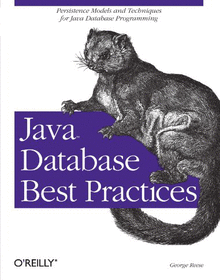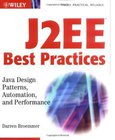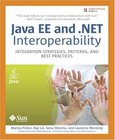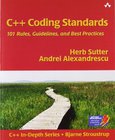Java Database Best Practices

Book Details:
| Publisher: | O'Reilly Media |
| Series: | OReilly , Best Practices |
| Author: | George Reese |
| Edition: | 1 |
| ISBN-10: | 0596005229 |
| ISBN-13: | 9780596005221 |
| Pages: | 304 |
| Published: | May 01 2003 |
| Posted: | Nov 19 2014 |
| Language: | English |
| Book format: | CHM |
| Book size: | 0.81 MB |
Book Description:
When creating complex Java enterprise applications, do you spend a lot of time thumbing through a myriad of books and other resources searching for what you hope will be the API that's right for the project at hand?Java Database Best Practices rescues you from having to wade through books on each of the various APIs before figuring out which method to use! This comprehensive guide introduces each of the dominant APIs (Enterprise JavaBeans, Java Data Objects, the Java Database Connectivity API (JDBC) as well as other, lesser-known options), explores the methodology and design components that use those APIs, and then offers practices most appropriate for different types and makes of databases, as well as different types of applications.Java Database Practices also examines database design, from table and database architecture to normalization, and offers a number of best practices for handling these tasks as well. Learn how to move through the various forms of normalization, understand when to denormalize, and even get detailed instructions on optimizing your SQL queries to make the best use of your database structure. Through it all, this book focuses on practical application of these techniques, giving you information that can immediately be applied to your own enterprise projects.Enterprise applications in today's world are about data-- whether it be information about a product to buy, a user's credit card information, or the color that a customer prefers for their auto purchases. And just as data has grown in importance, the task of accessing that data has grown in complexity. Until now, you have been left on your own to determine which model best suits your application, and how best to use your chosen API. Java Database Practices is the one stop reference book to help you determine what's appropriate for your specific project at hand. Whether it's choosing between an alphabet soup of APIs and technologies--EJB, JDO, JDBC, SQL, RDBMS, OODBMS, and more on the horizon, this book is an indispensable resource you can't do without.
Download Link:
Related Books:
J2EE Best Practices
Java Design Patterns, Automation, and Performance
Learn how to apply robust application design to your J2EE projectsThere are a number of best practices you need to consider to build highly effective J2EE components and integrate them into applications. These practices include evaluating and selecting the right set of software components and services to handle the job.In this book, Darren Broemmer supplies you with a set of best practices for J2EE development and then teaches you how to use them to construct an application architecture referred to as the reference architecture. The design and implementation of the reference architecture is based on a set of guiding principles that are used to optimize and automate J2EE development.In addition to the author's thorough discussions of the latest techno...
Java EE and .NET Interoperability
Integration Strategies, Patterns, and Best Practices
'It's a fact the .NET and Java platforms exist in the enterprise with many touch points. Developers are very eager for information and examples on how the two environments can coexist. This book reflects our interoperability collaboration with Sun and provides best practices for using Web services to bridge .NET and Java applications.' -DAN'L LEWIN corporate vice-president, Developer Platform Evangelism, Microsoft Corp. 'This book is a developer handbook for implementing interoperable applications and services. It includes actionable strategies for developers and best practices from the field experience.' -GREG PAPADOPOULOS chief technology officer, Sun Microsystems 'A comprehensive, practical guide to developing applications that cross the Java E...
C++ Coding Standards
101 Rules, Guidelines, and Best Practices
Consistent, high-quality coding standards improve software quality, reduce time-to-market, promote teamwork, eliminate time wasted on inconsequential matters, and simplify maintenance. Now, two of the world's most respected C++ experts distill the rich collective experience of the global C++ community into a set of coding standards that every developer and development team can understand and use as a basis for their own coding standards. The authors cover virtually every facet of C++ programming: design and coding style, functions, operators, class design, inheritance, construction/destruction, copying, assignment, namespaces, modules, templates, genericity, exceptions, STL containers and algorithms, and more. Each standard is described concisely, w...
2007 - 2021 © eBooks-IT.org



